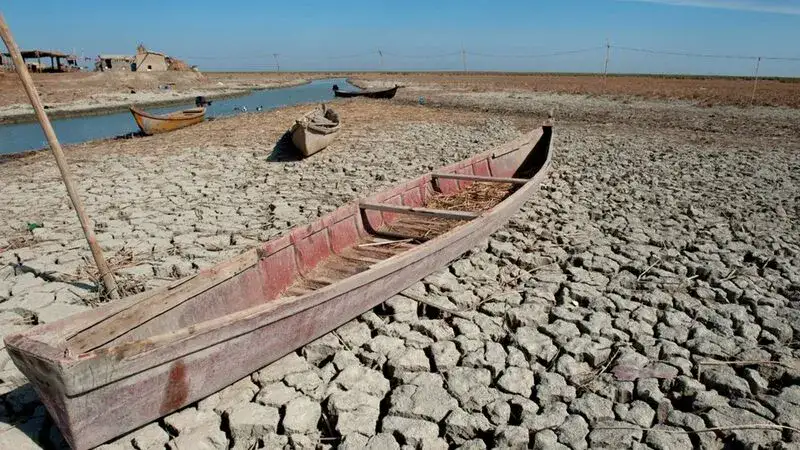The Euphrates River, one of the most historically and culturally significant rivers, is facing a severe crisis. Stretching over 1,700 miles and flowing through Turkey, Syria, and Iraq, this river has been a lifeline for civilizations for thousands of years. However, the Euphrates River drying up has become a pressing concern for environmentalists, policymakers, and local populations alike. This article delves into the causes, consequences, and potential solutions to this alarming phenomenon.
Overview of the Euphrates River
The Euphrates River, along with the Tigris, forms the backbone of Mesopotamia, often referred to as the “Cradle of Civilization.” Its waters have supported agriculture, trade, and settlement since ancient times. As a primary water source in the arid regions of the Middle East, the river plays a critical role in sustaining both human and ecological systems.
Causes of the Euphrates River Drying Up
The drying up of the Euphrates River is attributed to a combination of natural and human-induced factors.
1. Climate Change
Global warming has led to reduced rainfall and higher evaporation rates in the Middle East. This climatic shift has significantly diminished the water flow in the Euphrates River.
2. Dams and Water Diversion Projects
Countries along the Euphrates have constructed numerous dams, such as Turkey’s Atatürk Dam, for hydroelectric power and irrigation. These projects have reduced downstream water availability in Syria and Iraq, exacerbating water shortages.
3. Unsustainable Agricultural Practices
Over-irrigation and inefficient water management practices in the region have strained the river. Crops requiring high water inputs further deplete this essential resource.
4. Population Growth and Urbanization
Rising populations and expanding urban areas along the Euphrates basin have increased water demand. The over-extraction of water for domestic and industrial use has added to the crisis.
5. Geopolitical Tensions
Disputes over water rights among Turkey, Syria, and Iraq complicate efforts to manage and share the river equitably. Political disagreements have hindered the implementation of cooperative water management strategies.
Consequences of the Euphrates River Drying Up
1. Impact on Agriculture
The Euphrates River supports extensive agricultural activities. Its drying up has led to reduced crop yields, food insecurity, and economic hardships for farmers in the region.
2. Water Scarcity
Millions of people depend on the Euphrates for drinking water. As the river dries up, communities face severe water shortages, threatening public health and sanitation.
3. Loss of Biodiversity
The river is home to various aquatic species and supports surrounding ecosystems. Declining water levels have disrupted habitats, leading to biodiversity loss.
4. Cultural and Historical Loss
The Euphrates has been central to many ancient civilizations, including the Sumerians, Babylonians, and Assyrians. Its drying up threatens archaeological sites and the cultural heritage tied to the river.
5. Increased Migration and Conflicts
Water scarcity has forced people to migrate from affected areas, creating social and economic pressures. Additionally, competition for limited water resources has heightened tensions among communities and nations.
Efforts to Address the Crisis
1. International Cooperation
Countries sharing the Euphrates River must collaborate on equitable water-sharing agreements. Initiatives like the Tigris-Euphrates Basin Initiative aim to foster dialogue and cooperation among riparian states.
2. Sustainable Water Management
Implementing efficient irrigation systems and promoting water conservation practices can reduce water wastage. Modern technologies, such as drip irrigation, can optimize water use in agriculture.
3. Reforestation and Climate Mitigation
Planting trees and restoring vegetation along the river basin can reduce soil erosion, enhance water retention, and combat climate change.
4. Awareness and Education
Raising awareness about the importance of the Euphrates River and the challenges it faces can encourage communities to adopt sustainable water practices.
5. Technological Innovations
Desalination plants, water recycling, and other innovations can provide alternative water sources to reduce dependence on the Euphrates.
The Future of the Euphrates River
The Euphrates River drying up is a wake-up call for the global community. If left unaddressed, the crisis will continue to affect millions of lives and ecosystems. However, with concerted efforts from governments, organizations, and individuals, it is possible to mitigate the impacts and preserve this vital resource for future generations.
Conclusion
The Euphrates River is more than just a waterway; it is a symbol of life, culture, and history. The challenges it faces today highlight the urgent need for sustainable water management and international cooperation. By addressing the causes of its decline and implementing effective solutions, we can ensure that the Euphrates River continues to sustain life and civilization in the Middle East. If you need more information visit our site.

